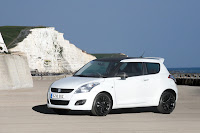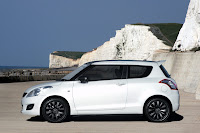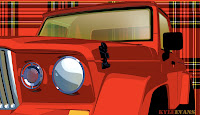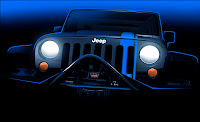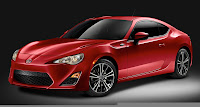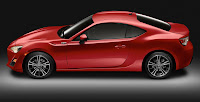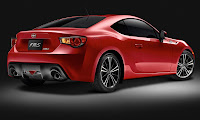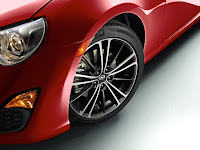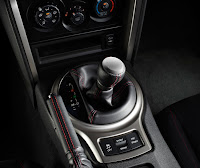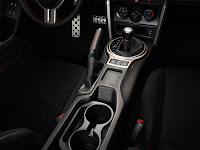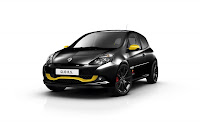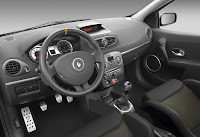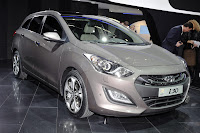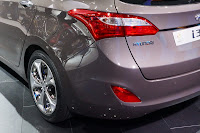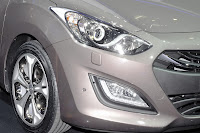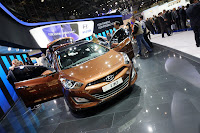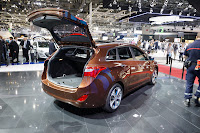Kareena Kapoor inaugurated Bollywood's very own Walk of the Stars on the lines of Hollywood's Walk of Fame at the Bandra Bandstand Promenade in Mumbai.
Madhur Bhandarkar was present with his daughter Siddhi at the event. On an impulse, when Kareena Kapoor called director MADHUR BHANDARKAR’s daughter SIDDHI on the stage, the kid got scared and started crying. Madhur had to step aside to console her. Below is a picture of Madhur Bhandarkar consoling his daughter Siddhi.
Randhir Kapoor joined daughter Kareena Kapoor as they unveiled Walk of Stars the Bollywood equivalent of Hollywood’s Walk of Fame. three generations of the Kapoor family in the same frame. Here Randhir and Kareena are seen sitting cozily beside a statue of Raj Kapoor.
For More of Bollywood Star Kids >>
About The Walk of the Stars:
Walk of the Stars is Bollywood's very own initiative on the lines of Hollywood's Walk of Fame at the Bandra Bandstand Promenade in Mumbai.
The Walk of the Stars will have statues, handprints and autographs of icons of the Hindi film industry immortalised on the tiles of the walkway.
Kareena said: "Some of the stars whose handprints and autographs will be installed here are no longer with us but thanks to this place we can still dance with them, touch them, feel them and actually realise what they were,"
The stars whose autographs have already been engraved at the walkway are Prithviraj Kapoor, Raj Kapoor, Sunil Dutt, Nargis Dutt and Shammi Kapoor. As a tribute to Raj Kapoor, the talismanic star of Bollywood's first family, a special brass statue seated on a bench has been installed at Bandstand.
Madhur said: "We have all seen the Walk of Fame on Hollywood Boulevard and this is the first time Mumbai is getting its own Walk of the Stars. This is just the beginning and such a gesture needs to go abroad too, since our industry has a huge fan following all over the world."
Meanwhile, Bollywood isn't wholly supporting the Walk of the Stars project. Riteish Deshmukh has initiated a rival walkway called Legends Walk, to be launched soon in the same area.
Madhur Bhandarkar was present with his daughter Siddhi at the event. On an impulse, when Kareena Kapoor called director MADHUR BHANDARKAR’s daughter SIDDHI on the stage, the kid got scared and started crying. Madhur had to step aside to console her. Below is a picture of Madhur Bhandarkar consoling his daughter Siddhi.
Randhir Kapoor joined daughter Kareena Kapoor as they unveiled Walk of Stars the Bollywood equivalent of Hollywood’s Walk of Fame. three generations of the Kapoor family in the same frame. Here Randhir and Kareena are seen sitting cozily beside a statue of Raj Kapoor.
For More of Bollywood Star Kids >>
About The Walk of the Stars:
Walk of the Stars is Bollywood's very own initiative on the lines of Hollywood's Walk of Fame at the Bandra Bandstand Promenade in Mumbai.
The Walk of the Stars will have statues, handprints and autographs of icons of the Hindi film industry immortalised on the tiles of the walkway.
Kareena said: "Some of the stars whose handprints and autographs will be installed here are no longer with us but thanks to this place we can still dance with them, touch them, feel them and actually realise what they were,"
The stars whose autographs have already been engraved at the walkway are Prithviraj Kapoor, Raj Kapoor, Sunil Dutt, Nargis Dutt and Shammi Kapoor. As a tribute to Raj Kapoor, the talismanic star of Bollywood's first family, a special brass statue seated on a bench has been installed at Bandstand.
Madhur said: "We have all seen the Walk of Fame on Hollywood Boulevard and this is the first time Mumbai is getting its own Walk of the Stars. This is just the beginning and such a gesture needs to go abroad too, since our industry has a huge fan following all over the world."
Meanwhile, Bollywood isn't wholly supporting the Walk of the Stars project. Riteish Deshmukh has initiated a rival walkway called Legends Walk, to be launched soon in the same area.



